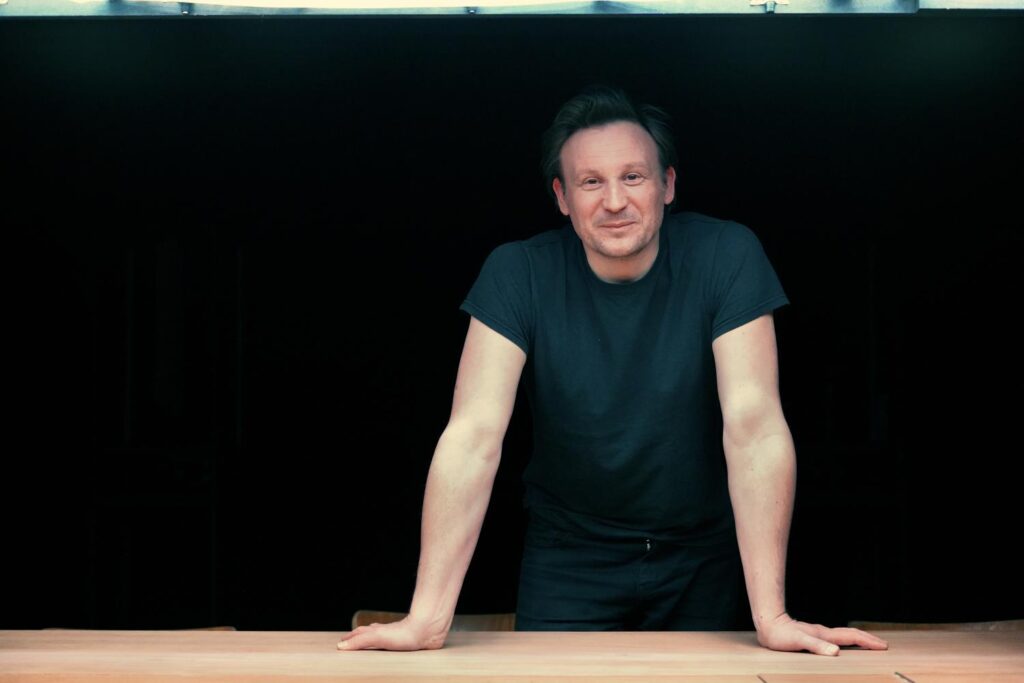
Within his Forced Labor cycle, Ugo Dehaes explores how to create dance with robots. In the interactive installation Arena (2020), he lets the audience manipulate and judge robots, teaching them to dance independently. In the performance Simple Machines (2021), he breeds and trains organic robots until they can take on the roles of dancer and choreographer.
In Limp (2024), the third part of this cycle, Ugo returns to his earlier fascination with the human body. This time he starts from the collaboration between humans and technology. Unlike the dystopian visions of the previous parts, Limp presents a more hopeful vision of technology.
Limp is a duet between a one-legged dancer and the technology of robots and specially developed artificial intelligence (AI). In Limp, technology is represented by a machine that uses rolling platforms, robotic sculptures, cameras and video projections to interact with the physical world. On the surface, the machine appears to help the dancer get to his feet. It hands him tools such as crutches or a prosthesis, teaches him movements by demonstrating them with robots. The machine films how the dancer translates this to his body and analyzes the new movements to finally use AI to create choreography for the dancer to perform. On a deeper level, an interaction occurs: we get to see a robot-human assemblage in which the relationship between the two is not tightly defined. From their specific materiality, they rework impulses into their own movement language that is both robotic and human, blurring the boundaries of dependence and support.
As technology and AI proliferate, we tend to overlook their shortcomings. At the same time, we are less tolerant of physical or mental limitations in humans. While Limp explores the fascination with technology as a support system, it also raises questions about its necessity.
Choreography: Ugo Dehaes in samenwerking met artificial intelligence en David Framba
Dance: David Framba
Dramaturgy: Marie Peeters
Music: Roeland Luyten
Lights: Arne Lievens
Video tech: Gertjan Biasino
Computational Creativity: Prof. Wiggins (The AI Experience Centre – VUB)
Preliminary research: Alexander Craens
Production: kwaad bloed
Coproduction: C-TAKT, STUK, Perpodium
Distribution: Vincent Company
With the support of: de Tax Shelter van de Belgische Federale Overheid
Kwaad bloed is structurally supported by VGC
Residencies: The AI Experience Centre, Axiles Bionics, De Factorij, Het Gasthuis, 30CC, Danserie, De Pianofabriek, Destelheide
Research with the support of: Participatieve Partnerprojecten van de Vlaamse Gemeenschap
